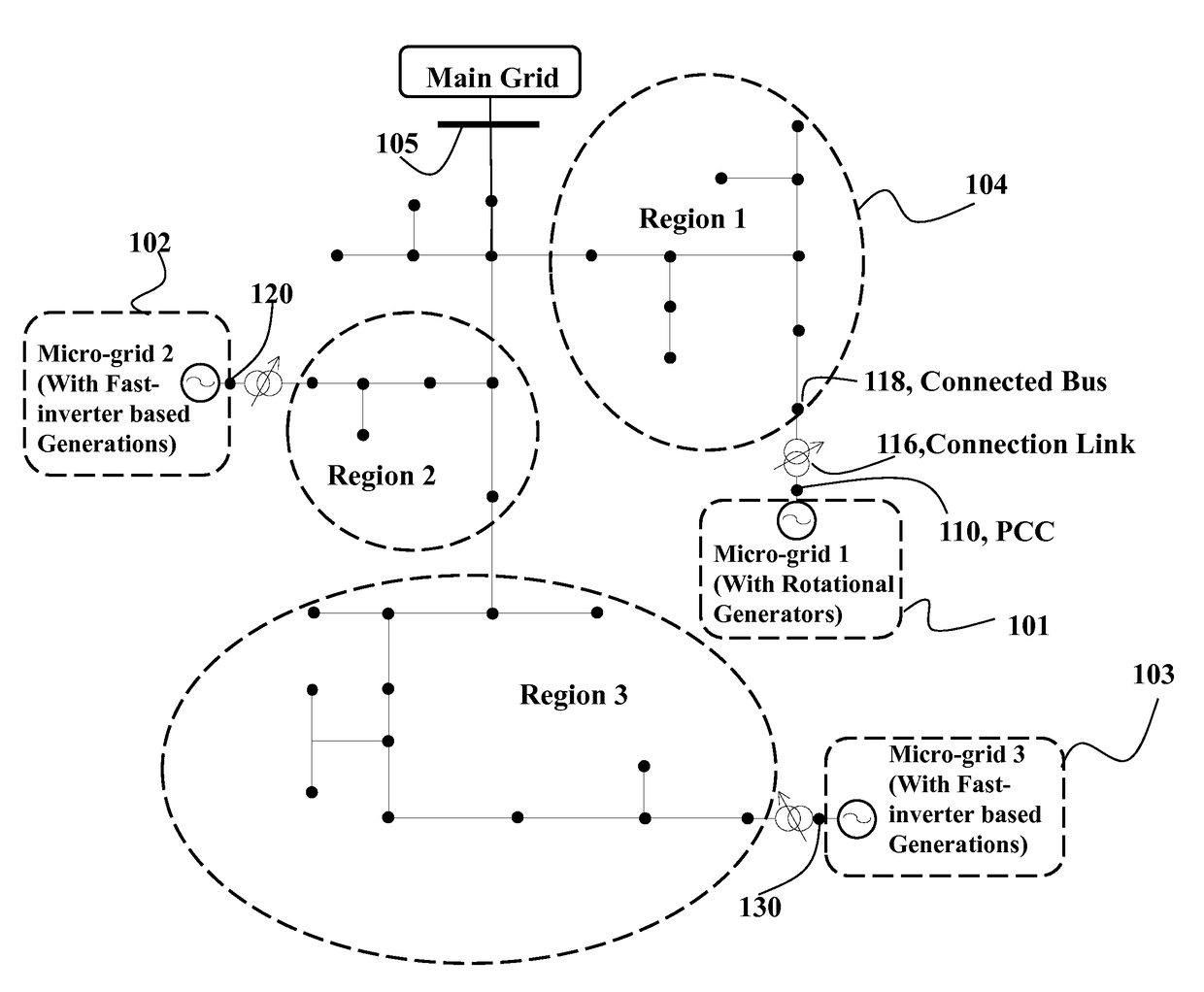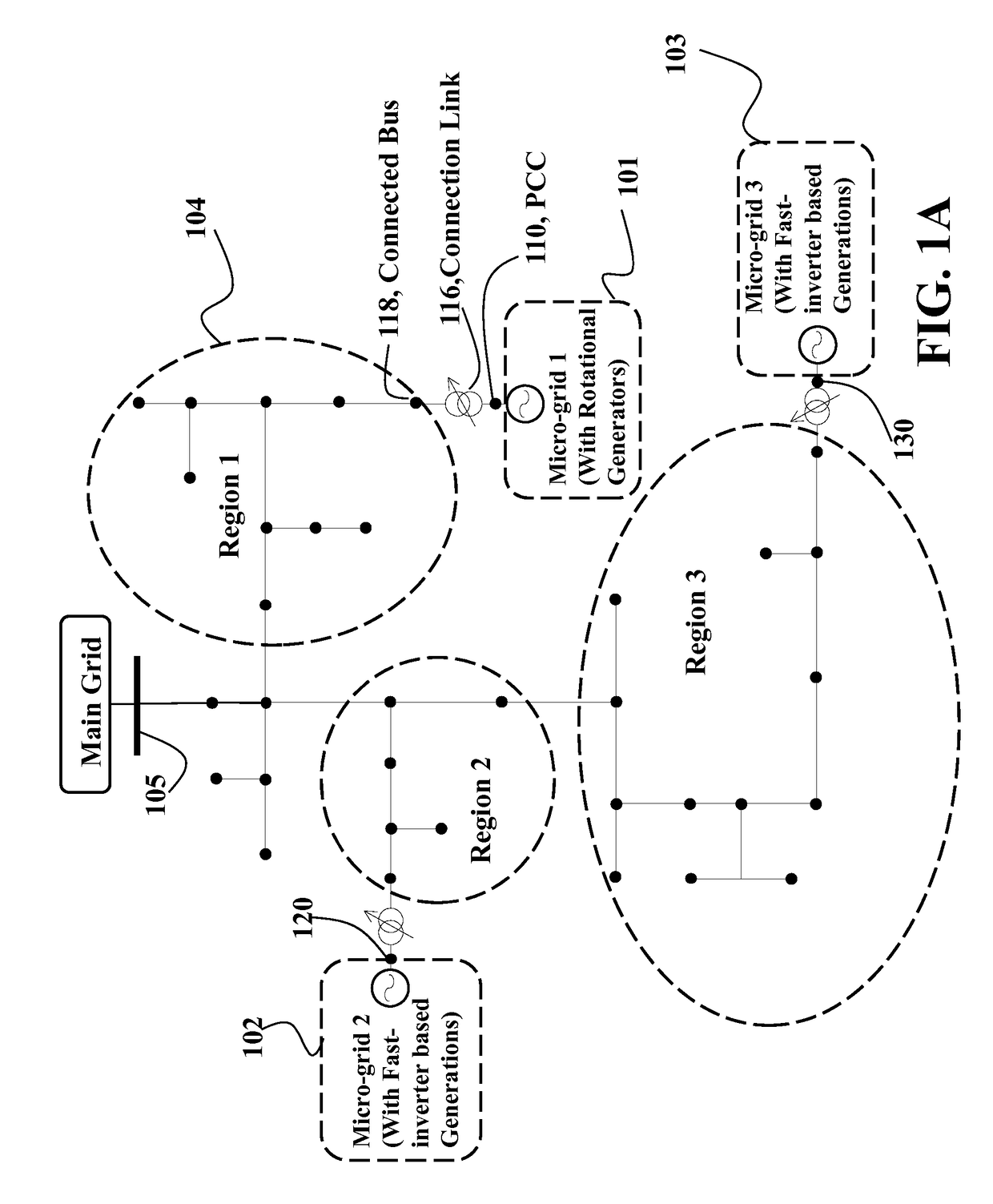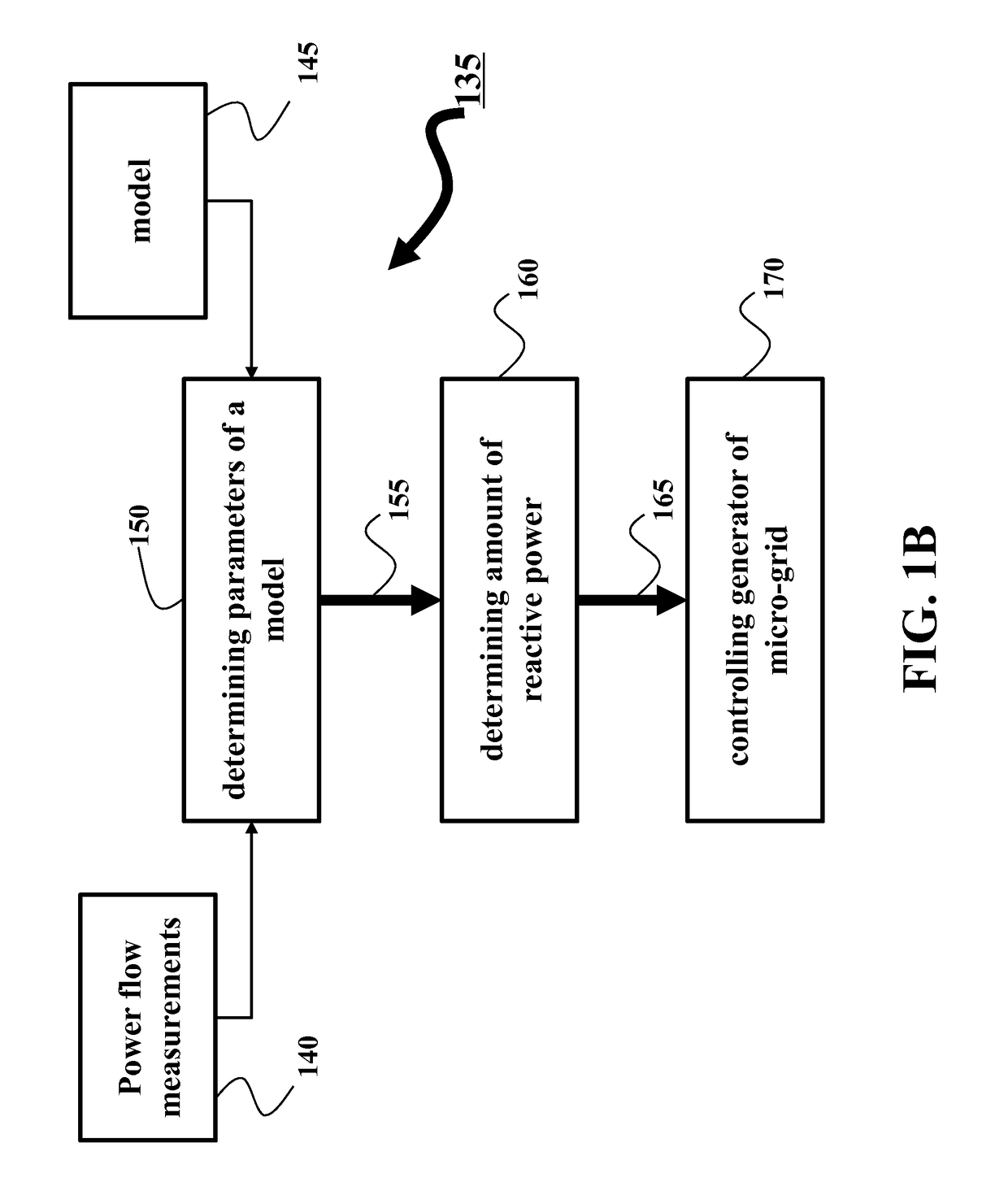Automatic Power Generation Control in Micro-Grids
a micro-grid and power generation technology, applied in the direction of electric generator control, process and machine control, instruments, etc., can solve the problems of reducing the quality of power supply to the pds, reducing the plug-in capability of the micro-grid into the pds, and providing an extra burden to the pds
- Summary
- Abstract
- Description
- Claims
- Application Information
AI Technical Summary
Benefits of technology
Problems solved by technology
Method used
Image
Examples
Embodiment Construction
[0019]Overview of Micro-Grid Connected to Power Distribution System
[0020]FIG. 1A shows an example of a micro-grid, e.g., a micro-grid 101, 102 or 103, connected to a power distribution system (PDS) 104 according to some embodiments of an invention. The PDS is connected to the main grid (i.e. transmission system) through a bus 105. Three micro-grids are connected to the PDS through a point of common coupling (PCC), for example, buses 110, 120, and 130 respectively. Therefore, each micro-grid connects to the power distribution network through its PCC at bus i to a load bus j. A link connects the PCC of each micro-grid with a bus of the PDS. For example, the PCC 110 is connected with the first bus 118 on the PDS through a connection link. The connection link can include, for example, a step-up transformer 116 or transmission line to connect the micro-grid to the connected bus 118.
[0021]In some implementations, the taps of each transformer are used to regulate the voltage at a point of ...
PUM
 Login to View More
Login to View More Abstract
Description
Claims
Application Information
 Login to View More
Login to View More - R&D
- Intellectual Property
- Life Sciences
- Materials
- Tech Scout
- Unparalleled Data Quality
- Higher Quality Content
- 60% Fewer Hallucinations
Browse by: Latest US Patents, China's latest patents, Technical Efficacy Thesaurus, Application Domain, Technology Topic, Popular Technical Reports.
© 2025 PatSnap. All rights reserved.Legal|Privacy policy|Modern Slavery Act Transparency Statement|Sitemap|About US| Contact US: help@patsnap.com



